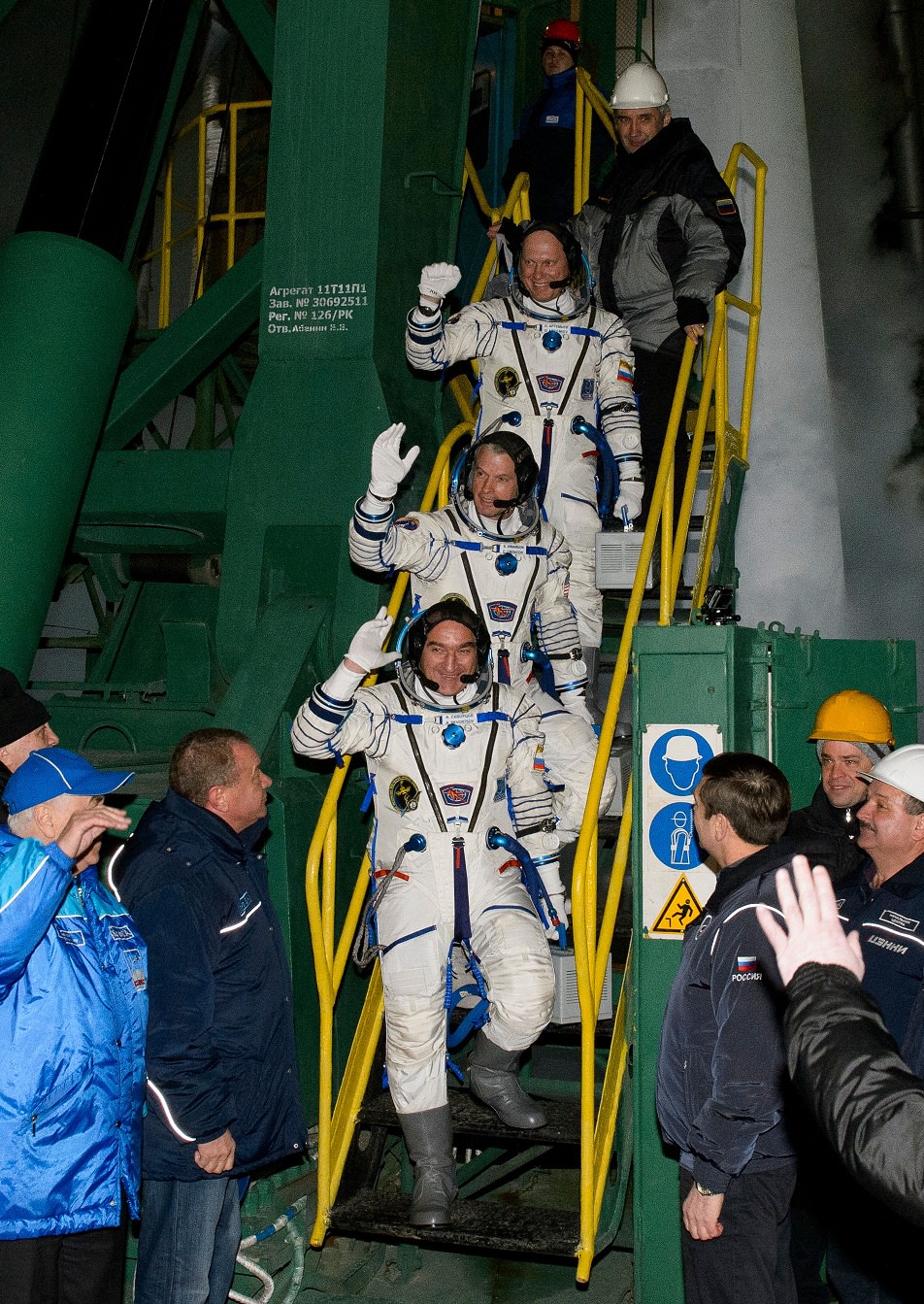

The Expedition 39/40 crew just before climbing into their Soyuz spacecraft in Kazakhstan on March 25, 2014. From top, Oleg Artemyev (Roscosmos), Steve Swanson (NASA) and Alexander Skvortsov (Roscosmos). Credit: NASA/Joel Kowsky
Update, 8:33 p.m. EDT: The Soyuz spacecraft arrived safely at station at 7:53 p.m. EDT (11:53 a.m. UTC) and coverage of the hatch opening is scheduled at 10:15 p.m. EDT (2:15 a.m. UTC).
After spending an extra couple of days in the cramped Russian Soyuz spacecraft, the incoming International Space Station crew will likely be very be glad to get out and stretch their legs. You can check out the festivities live in the video link above.
Three people are set to make a docking with the orbiting complex at 7:58 p.m. EDT (11:58 p.m. UTC). If all goes to schedule, they’ll pop the hatch open at 10:40 p.m. EDT (2:40 a.m. UTC). Meanwhile, engineers are trying to figure out what caused the malfunction that prevented a docking as planned on Tuesday (March 25).
Remember that all schedules are subject to change, so tune into NASA TV well before each event happens.
The Expedition 39/40 crew lifted off Tuesday afternoon (EDT) from Kazakhstan to take a fast track to the space station that should have seen them dock on launch day. The Soyuz has to make three engine firings or burns to accomplish this. The docking was cancelled after the third burn did not happen as planned. The Russian Federal Space Agency (Roscosmos) has determined this was because the spacecraft was in the wrong orientation, but the underlying cause is still being investigated.
Once this happened, the crew switched to a standard backup procedure to bring them to the station in two days instead. (This path, in fact, was what all crews did up until last year.) The crew is safe and in good spirits heading up to the docking, NASA has said. The Soyuz has done several other engine firings since, with no incident.
The Soyuz crew includes Steve Swanson (NASA), Alexander Skvortsov (Roscosmos) and Oleg Artemyev (Roscosmos). Awaiting them on the station are Koichi Wakata (Japan Aerospace Exploration Agency), Rick Mastracchio (NASA) and Mikhail Tyurin (Roscosmos). Wakata is in command of the station, marking a first for Japan’s astronaut corps.
If you've ever looked at Mars through a telescope, you probably noticed its two polar…
Our Solar System is in motion and cruises at about 200 kilometres per second relative…
Late is better than never for the ‘Blaze Star’ T Coronae Borealis. It was on…
A planet's history is told in its ancient rock. Earth's oldest rocks are in the…
Data from the Chinese rover Zhurong is adding to the pile of evidence for oceans…
New information is pushing Asteroid 2024 YR4 off of our front pages. Initial estimates gave…